JOHANNA NORDBLAD
ICE WATER FREEDIVER
INIGO PRESENTS
THE ICE QUEEN
Filmed on location in Southern Finland, Inigo presents an intimate and captivating short film introducing world record-holding ice water freediver, Johanna Nordblad. Discover the science that enables her to manage the huge risks involved in diving for 103 meters, under a frozen lake, on a single breath.
BEHIND THE SCENES
Join us for a behind-the-scenes glimpse at the making of 'The Ice Queen'. A first-hand account of a truly remarkable journey into the forbidding and desolate environment of the Finnish lakes. Learn how the Inigo Risk Ambassador campaign, fuelled by our relentless curiosity, is surfacing multiple new perspectives around the science of risk.
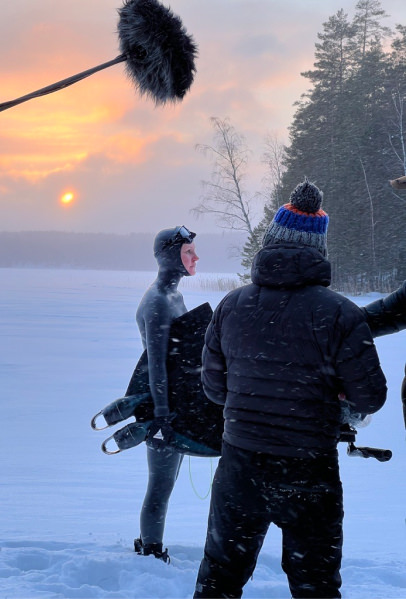

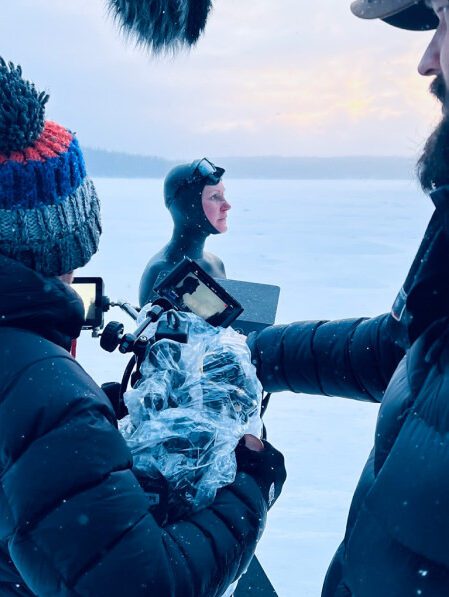

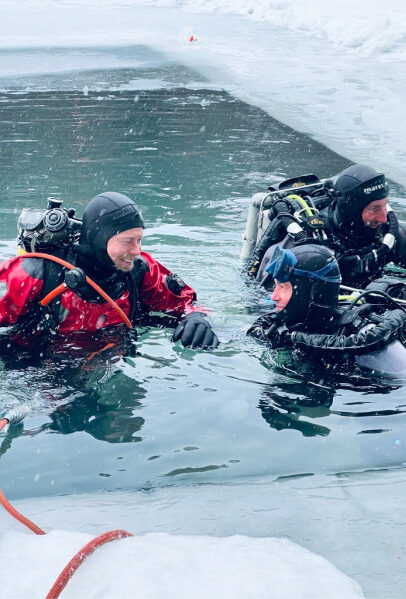



JOHANNA'S STORY
THE ACCIDENT
Johanna never set out to become what she is today. Her affinity for the ice started following a downhill mountain biking incident in 2010. The accident caused significant damage to her leg, necessitating an open wound for several days in the hospital to save her leg. Although her bones eventually mended, the nerve endings did not. Even years later, Johanna would be tormented by the extreme agony. Feeling as though she was losing her sanity, she sought relief in cold-water therapy upon a doctor's recommendation. Initially, the experience was unbearable. Yet, after just a few minutes, she found relief. The pain had gone.
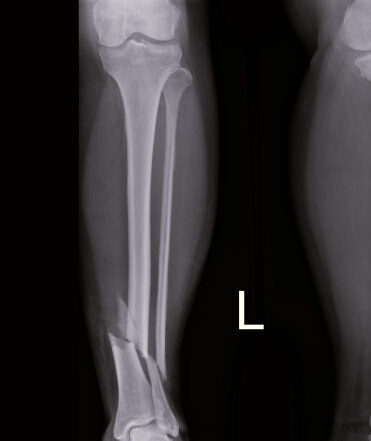
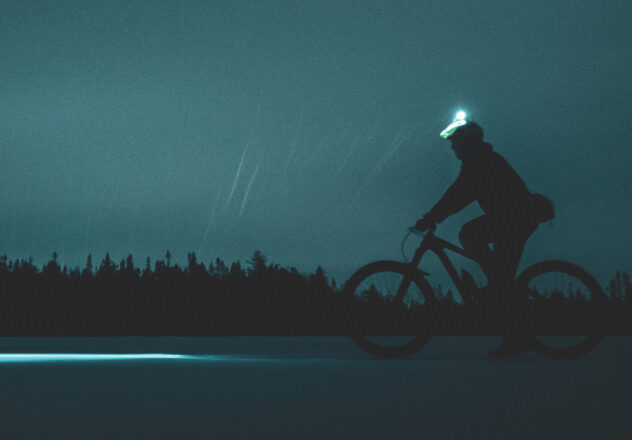
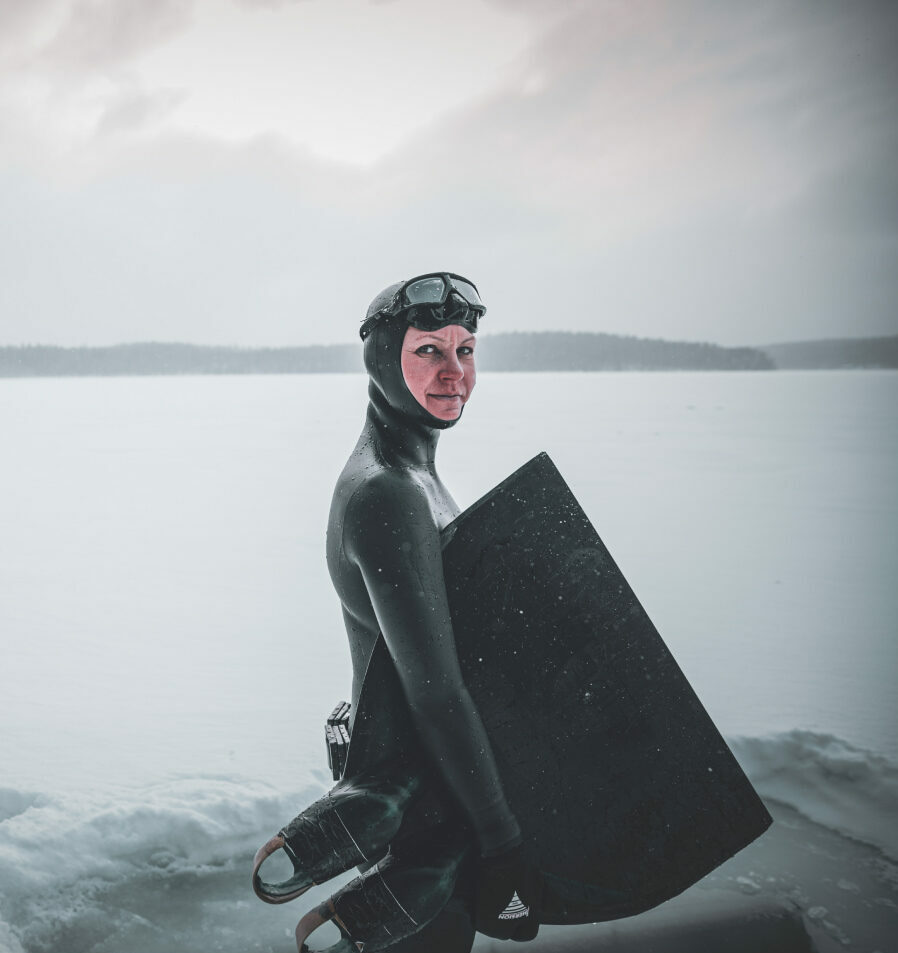
Lake Sonnanen, Heinola, Finland
UNDER THE ICE
She never dives alone. A team of safety divers are always present in the water should something go wrong. The water temperature is so cold, around 2°C, that the divers use a rebreathing system as part of their oxygen tanks. This equipment ensures the oxygen they breathe is at body temperature. Breathing oxygen chilled by the water would be fatal. Her sister, Elina is a critical part of her safety team. There is an intuitive bond of trust between them that cannot be rationally explained.
UNDER THE ICE
50M
Set the women's ice diving World Record, swimming 50m under the ice without fins or a wetsuit on a single breath.
2021
103M
Went on to beat the men’s World Record by diving 103m.
Achieving a heart
rate of just 10 BPM
The mammalian dive reflex is a physiological reaction we all possess. When Johanna’s face comes into contact with cold water or when she submerges herself in water, several physiological changes occur in response to the dive reflex. These changes aim to reduce her oxygen consumption and redirect blood flow to essential organs, such as the heart and brain. These physiological events occur sequentially.
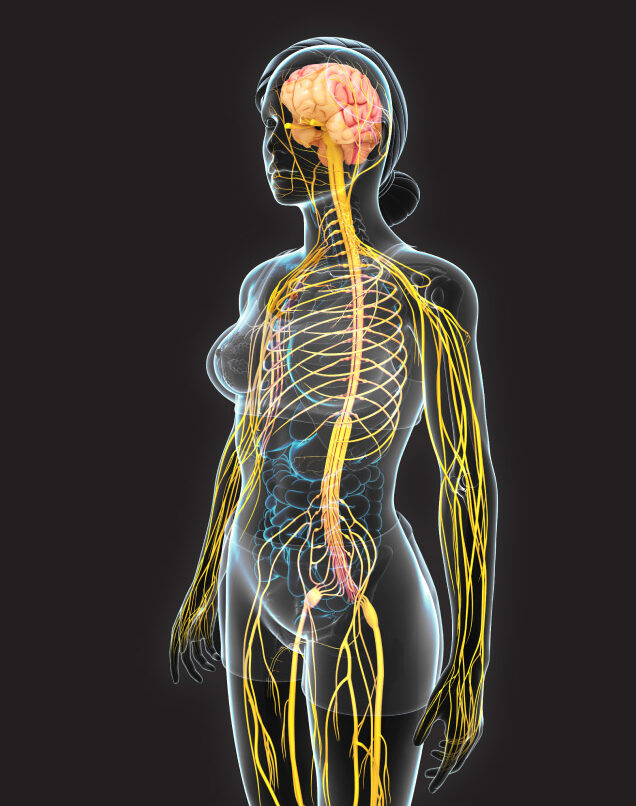

THE VAGUS NERVE
A nerve no thicker than a single human hair is the critical communication channel between Johanna’s brain and vital organs. Her ability to stimulate this nerve allows her to control her heart rate within very strict parameters.

BRADYCARDIA
Her heart rate slows down significantly, sometimes by as much as 50 percent or more. This reduction in heart rate helps her conserve oxygen and allows her body to maintain a steady supply of blood to vital organs.

BLOOD SHIFT
As a response to the increased pressure underwater, blood is shifted from her extremities towards her chest cavity and vital organs. This redistribution of blood helps to maintain the blood pressure and oxygen supply to her essential organs.

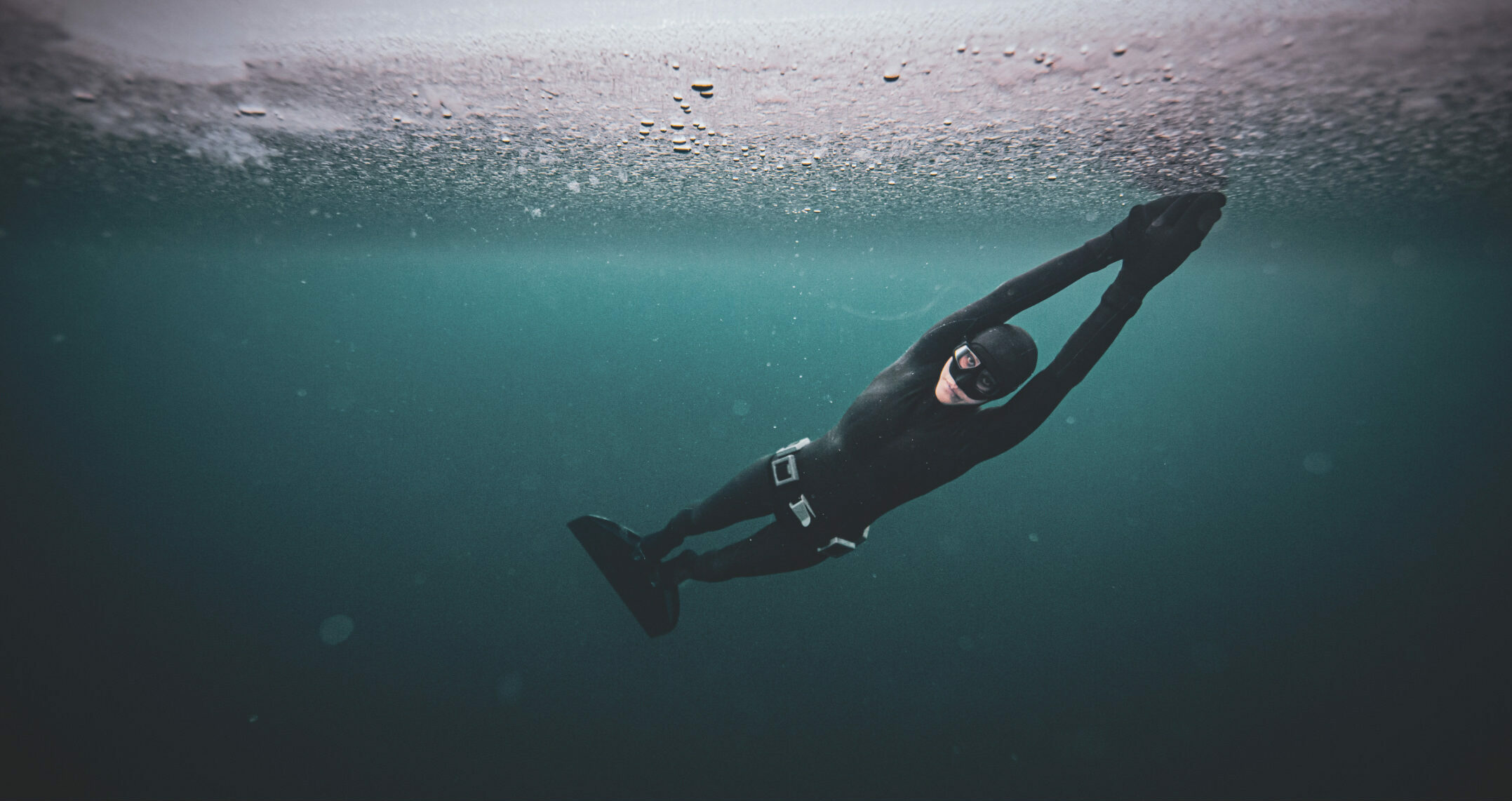
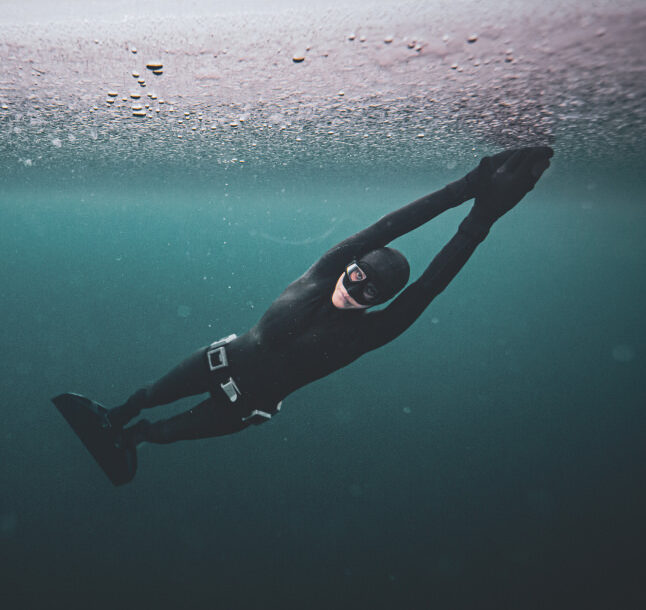
Johanna wearing a 9mm wetsuit, weighted belt and monofin.
The equipment
ICE DAGGERS
If the ice suddenly breaks under foot as she is traversing a frozen lake, Johanna carries ice daggers tethered to her wrists as a safety precaution. They might be the only chance she has of preventing herself going under.
GUIDE ROPE
Johanna uses a brightly coloured guide rope under the ice. The danger of disorientation is high. Losing her way back to the ice hole could end in catastrophe.

Chainsaws and ice saws are used to create entry points into the lake.


Ice thickness on Lake Sonnanen reaches up to 1 Meter in the winter months.




